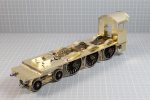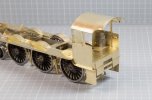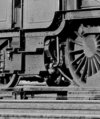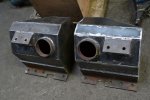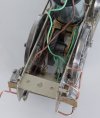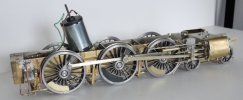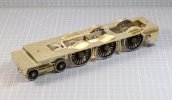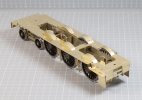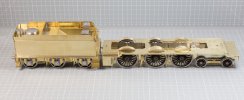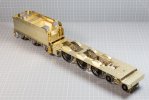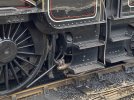Finney7 Hall cab nearly done, as befits early etched designed kits, a bit of a jar of eels.
Beautiful etches, lovely detail and very accurate, just no way to hold them or aids to align, so get yourself down to Screwfix and order a box of Octopus fingers. There are only two tabs and these are on the cab front base, that's your fixed point to work from, the rest are all free standing items to add.
The trick is to add very small dabs of solder in a couple of places and tweak each sheet until your happy, then solder it all up. I did add a short piece of angle between the front and sides below the spectacle plates to give a bigger surface area to join the sides to the front. Take your time, work carefully and it'll all come right on the night.
I didn't make life easier, the chose engine is 6952 (lot 350) which has a few differences that the kit doesn't do, the first is the cab handrail which needs to be L shaped.
You need to remove the surface etched fixing washers for the straight handrail and make smooth, then fill the front hole; it's half etch sheet here...0.2 mm in reality...so your plug is going to be really thin (I added a faux riveted strap behind on the inside to help) then drill the two new ones and form the handrail.
Had I realised this long before I opened the box then I think new etched side sheets would be the way to go, more expense but the time taken to dress everything ultra smooth and not damage surrounding detail would be far outweighed by the ease of just fitting a new side sheet.
I've been using Limelite a lot to keep the work clean, bit by bit it's turning all the solder joints black, however looking at the photos it does look like the joint between the rear buffing plate and step sheet has split, i'll look at that in the morning.
